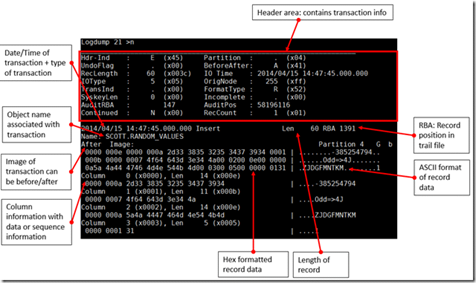Oracle GoldenGate Real-Time Statistics Gathering
Introduction
Oracle GoldenGate is the data integration software used by many enterprise organizations to ensure real-time data movement. While data is moving through an enterprise, the amount of data is based on how the capture and to apply processes are configured. As a result, many enterprises want to discern the amount of data definition language (DDL) and data manipulation language (DML) that has been processed through the environment.
Identifying the amount of data, DML and/or DDL, that is being processed is beneficial for the following reasons:
- Gaging the volume of data being processed
- Identifying operations that are commonly used
- Defining the performance of the environment
Knowing the amount of data and the types of operations performed by Oracle GoldenGate is key to administering the environment and the whole business. In addition, this simple insight will enable administrators to pinpoint any irregularities within the replication environment quickly.
Statistics – Where are they?
Organizations implement Oracle GoldenGate for real-time data integration needs, they often hurry to get replication implemented. Once replication has been established, organizations start to derive how to monitor or gather needed statistics from the environment. This typically leads to administrators figuring out how to pull this information from command line tools like GoldenGate Command Service Interface (GGCSI) or GoldenGate AdminClient.
Leading to questions like:
- There must be an easier way to capture statistics.
- Are stats not part of the core product?
- How can we pull statistics while replicating?
In the following sections, we will highlight where and how these questions can be answered using the tools that come with Oracle GoldenGate and within the Oracle Database.
Trail File Header Information
Oracle GoldenGate uses a file-based concept to ensure that added transactions are captured, shipped, and applied in a timely manner. These files are commonly referred to as trail files. The trail files are files that Oracle GoldenGate will either write to or read from. These files are also organized by transactional sequence, meaning that the order in which the transactions are captured will be the same order they are applied to the target system.
This becomes handy when looking for statistics. All the information needed for statistics of the environment is placed in the header of the trail files. Using the trail file’s header, the required information can be read and prepared for usage on the target platform through the apply process.
To better understand what is in the header of the trail file, Image 1 provides a breakdown of the different sections of the header.

Database Setup (Target)
The target database must be configured to accept incoming transactions from the Oracle GoldenGate Apply process…
Submit Your Info to Continue Reading
Table of Contents
Introduction
Statistics – Where are they?
Trail File Header Information
Database Setup (Target)
Oracle GoldenGate – Macros
Oracle GoldenGate – GETENV
Oracle GoldenGate – Parameter File (Apply)
Outputs
Conclusion
Appendix – Associated Logic
